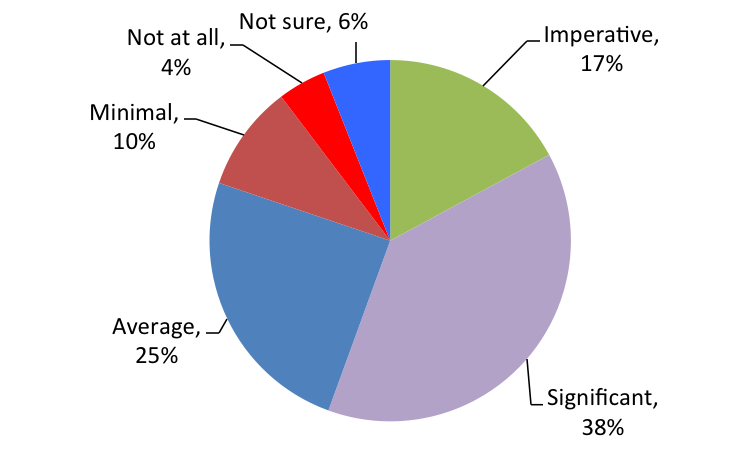
Image by: Leysan, ©2016 Getty Images
Ask someone about their business processes, and the average worker will describe the activities they undertake. For many, the underlying business process is a hidden entity that keeps the business running. They know that there are processes in place but are unlikely to know any of the details. This is a very common occurrence and something I hear often. Yet, at the higher level, process is extremely important, as is the inclusion of business process management (BPM) within the overarching strategy.
In a recent report by AIIM titled "Process Improvement and Automation 2016 - A look at BPM," 55% of respondents say BPM is significant (38%) or imperative (17%) for their business.”

In AIIM's latest report, "Process Improvement and Automation 2016 - A look at BPM," they ask respondents how important BPM is to the organization’s business goals and success.
Source: AIIM 2016
So, while the actual process may be hidden to most, the reality is that it is vital to have efficient, effective, and monitored business processes in place. Businesses have come to realize that back-office business processes must be improved, refined, automated, and monitored in order to achieve the levels of productivity they need to meet clients' needs and provide the control to meet regulatory and compliance needs.
Consider this
Content without process goes nowhere, and likewise, process without content—in whatever form that may be—serves no purpose. Poor processes will slow and even stall business transactions and activities. This same report shows that “stuck in process" is the biggest operational problem for 58% of respondents, while 46% indicate compliance errors as a problem. It becomes obvious very quickly that BPM is a good approach in addressing these issues and adding value to the business process.
What to think about
I have said this before and will continue until the day I can no longer speak: First and foremost, identify a real business problem to focus on—not just the symptoms. Many times, I hear that the slow processing time is the issue when, in reality, that is the result of an underlying problem. Perhaps, there is a bottleneck in the process or too many unnecessary steps that do not add value. Whatever the reason, find the real problem first, then develop an approach, and select the right technology set to fix it.
If you uncover a bottleneck, consider using parallel processing to open it up or even to distribute and balance the workload across several resources. If it is a review step, assess how it may be automated so that the only things requiring human intervention are exceptions. If there are too many steps, identify those with value, and eliminate those not adding value. In many cases, several steps can be eliminated as the result of no value-add.
In my view
The time has come for process improvement and automation using BPM to take its rightful place in business as an integral part of the information ecosystem. Not only will BPM deliver results in automating processes, but with its capability to link back-end systems, connect humans, and monitor the workplace, it brings the entire organization into focus. The more businesses digitally transform, and more digital information is created and captured for business use, the greater the need will be to design, implement, maintain, and improve business processes. This includes the ability to extend these processes beyond corporate walls to partners, suppliers, and customers. The next question I have for you is, "How much value do you see in your hidden processes?"
Bob Larrivee is Vice President and Chief Analyst of Market Intelligence at AIIM and an internationally recognized subject matter expert and thought leader with over 30 years of experience in the fields of information and process management. He is an avid techie with a focus on process improvement and the application of advanced technologies to enhance and automate business operations. Follow him on Twitter @BobLarrivee.






















